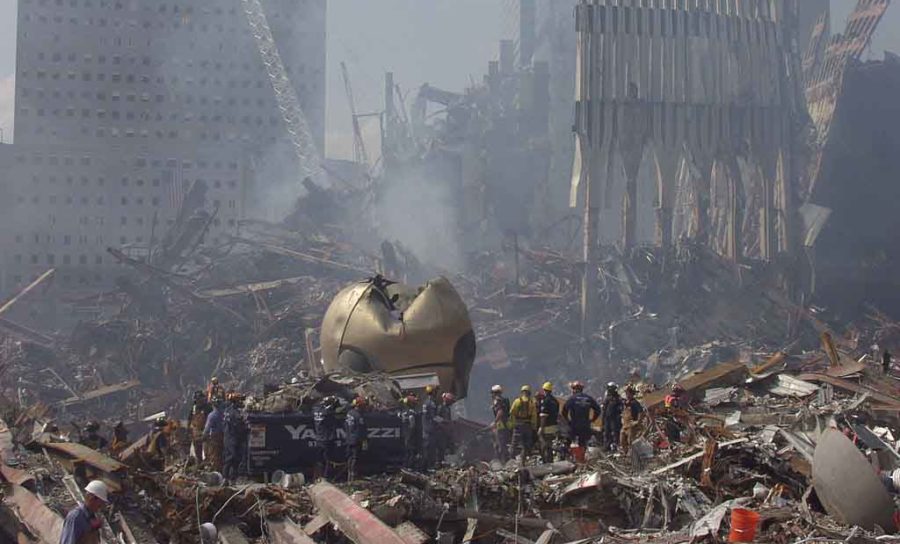SIU museum holds piece of 9/11 history
Rescue crews work to clear debris from the site of the World Trade Center near the “Sphere” on Sept. 21, 2001, in New York City. (Photo by Michael Rieger/ FEMA News Photo via Wikimedia Commons)
September 11, 2016
Fifteen years ago Sunday, the twin towers of New York City’s World Trade Center crumbled around a sculpture.
Although the sculpture — called the “Sphere” by Fritz Koenig — will soon be moved back to Ground Zero, SIU museum’s piece of the art is staying put.
In 2012 the University Museum was given an interior steel frame of the sculpture, said Dona Bachman, director of the museum and the Museum Studies program.
Advertisement

Before the Sept. 11, 2001, terrorist attacks that killed nearly 3,000 people, the “Sphere” sat near the World Trade Center.
An iconic image of the aftermath of two planes crashing into the towers pictures a haze rising from a rubble-filled scene with the sculpture intact, but damaged, among piles of destruction.
In 2002, the 27-foot-tall bronze globe was relocated to Battery Park in Manhattan, according to the New York Times.
“After 9/11 happened, the Port Authority of [New York and] New Jersey was responsible for cleaning up the plazas,” Bachman said. “They were also in charge of sending pieces to museums all over the United States.”
But now, 14 years later, it’s time for another move for the statue — this time returning the 25-ton piece of art back to its home at Ground Zero.
Although the “Sphere” is still recognizable as a globe-shaped sculpture, the metal frame SIU’s museum possesses in its archives is not.
“When you see the steel frame, you’d need a description explaining what it is,” Bachman said. “But when you think of the wreck and ruin of the disaster, it is not surprising you wouldn’t be able to recognize what it is. It looks like a piece of angle iron, but once you know what it is, it’s something meaningful.”
Advertisement*
Staff writer Shyanne Jasper can be reached at [email protected] or on Twitter @sjasper_DE.
To stay up to date with all your SIU news, follow the Daily Egyptian on Facebook and Twitter.
Advertisement







